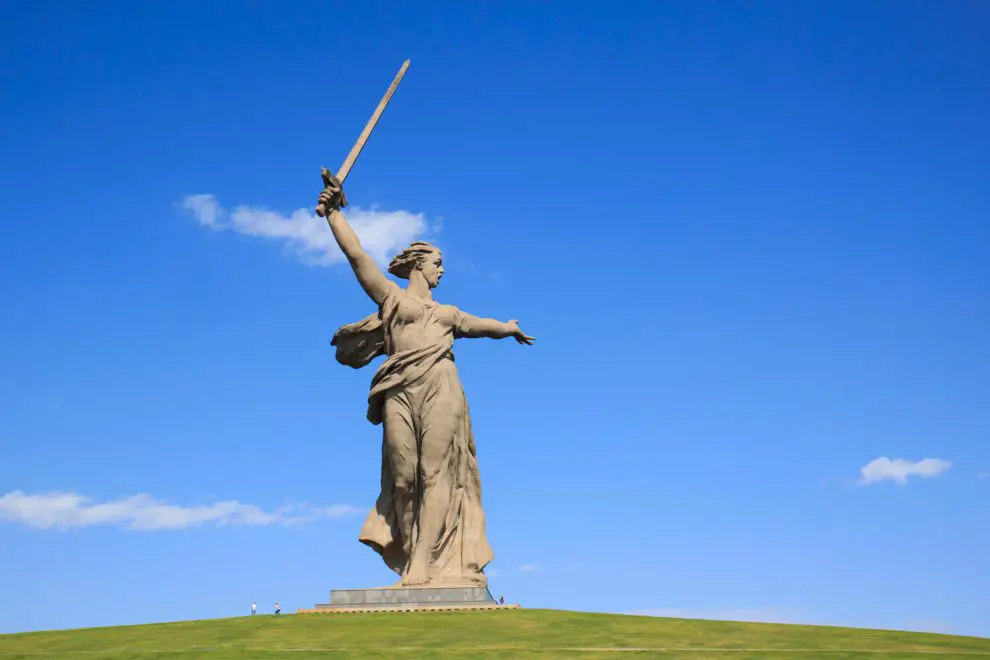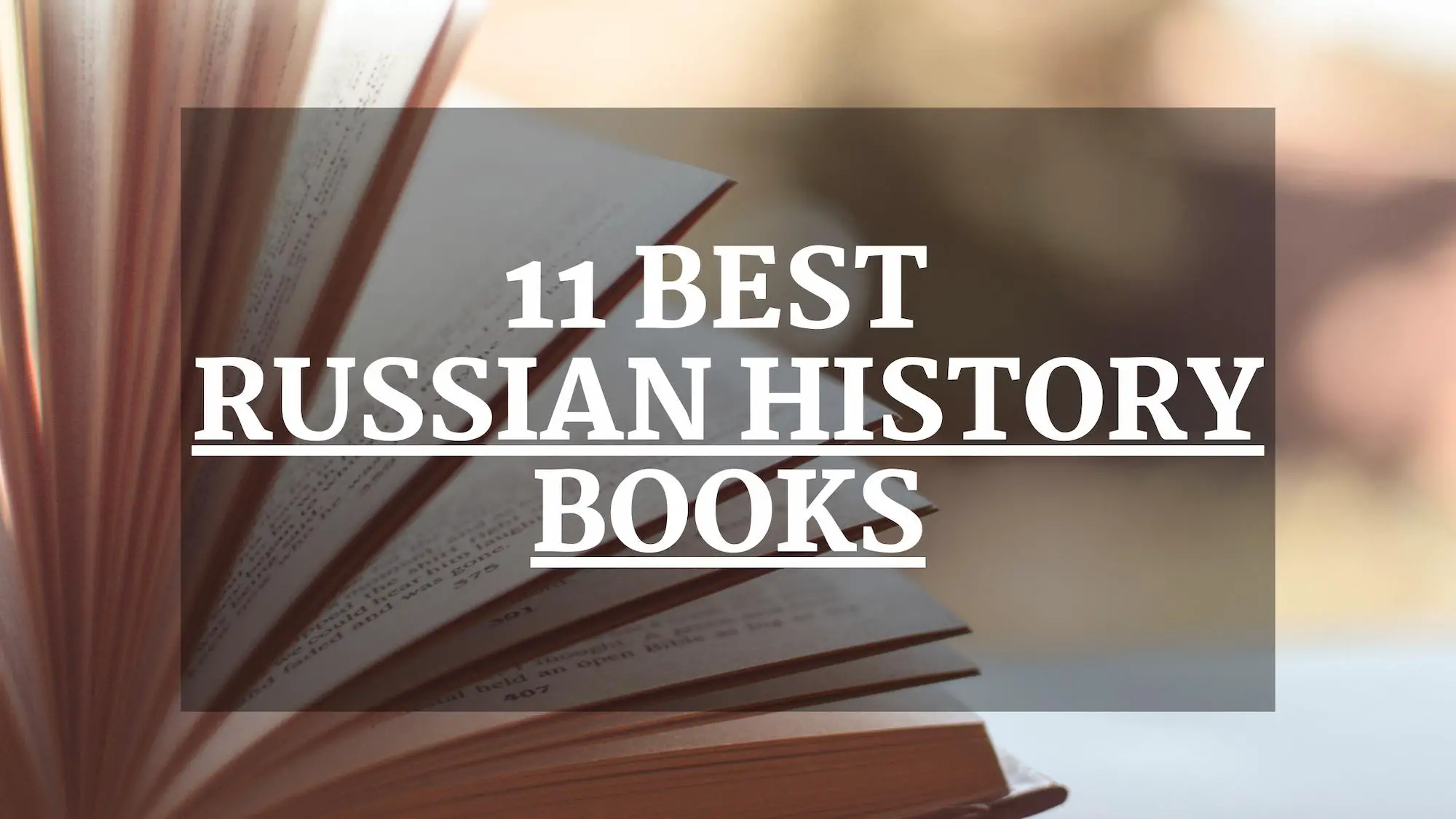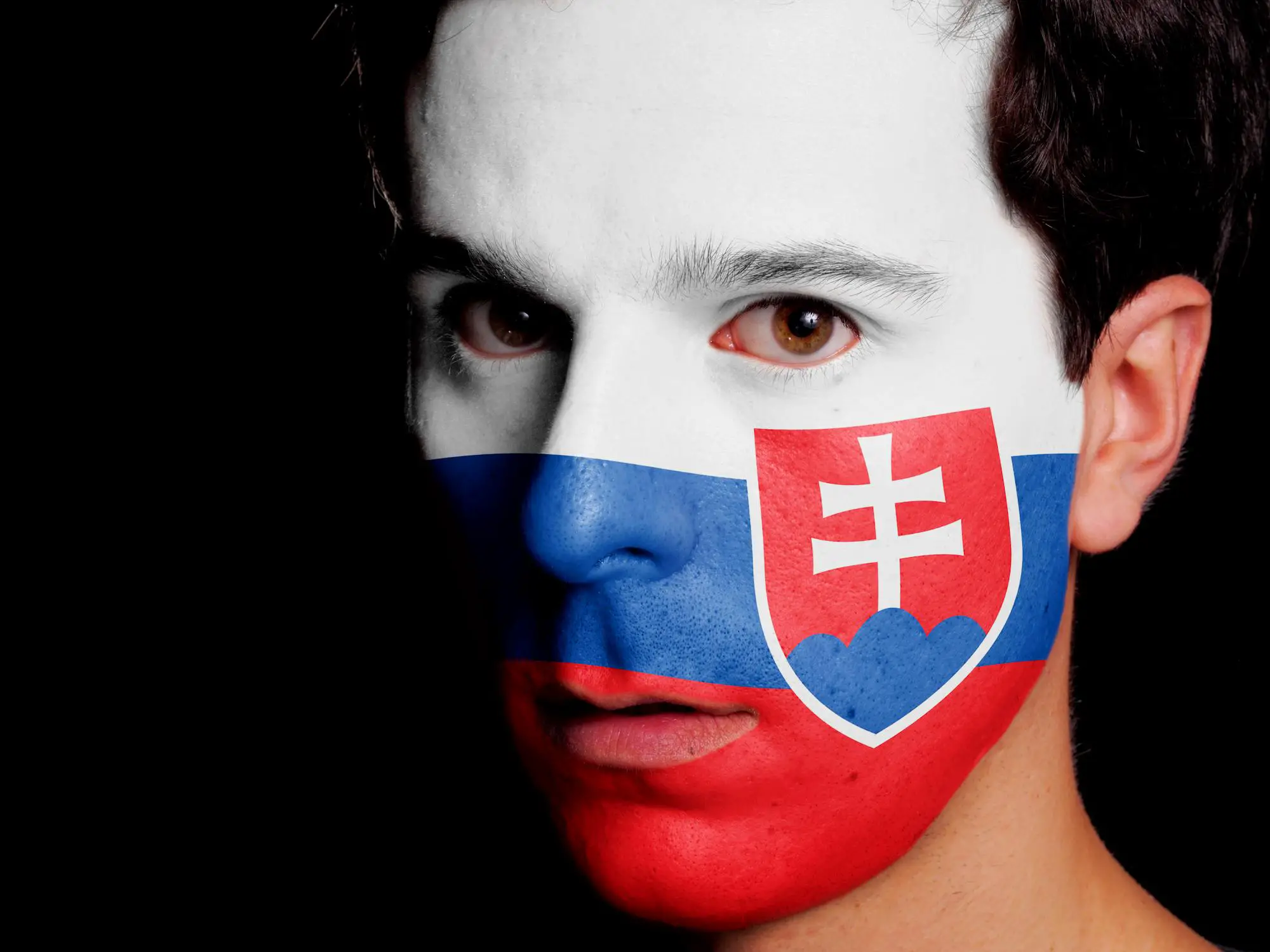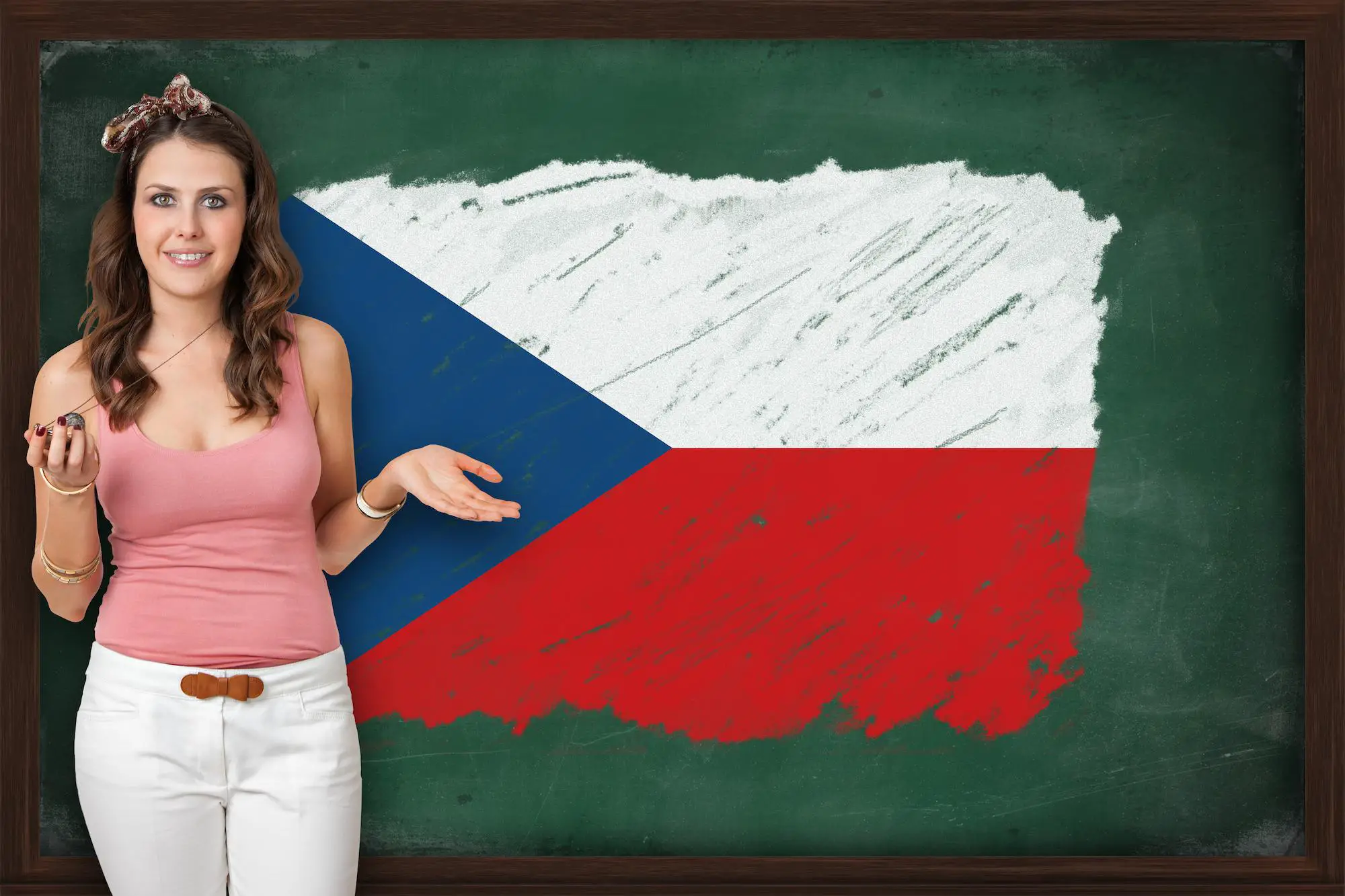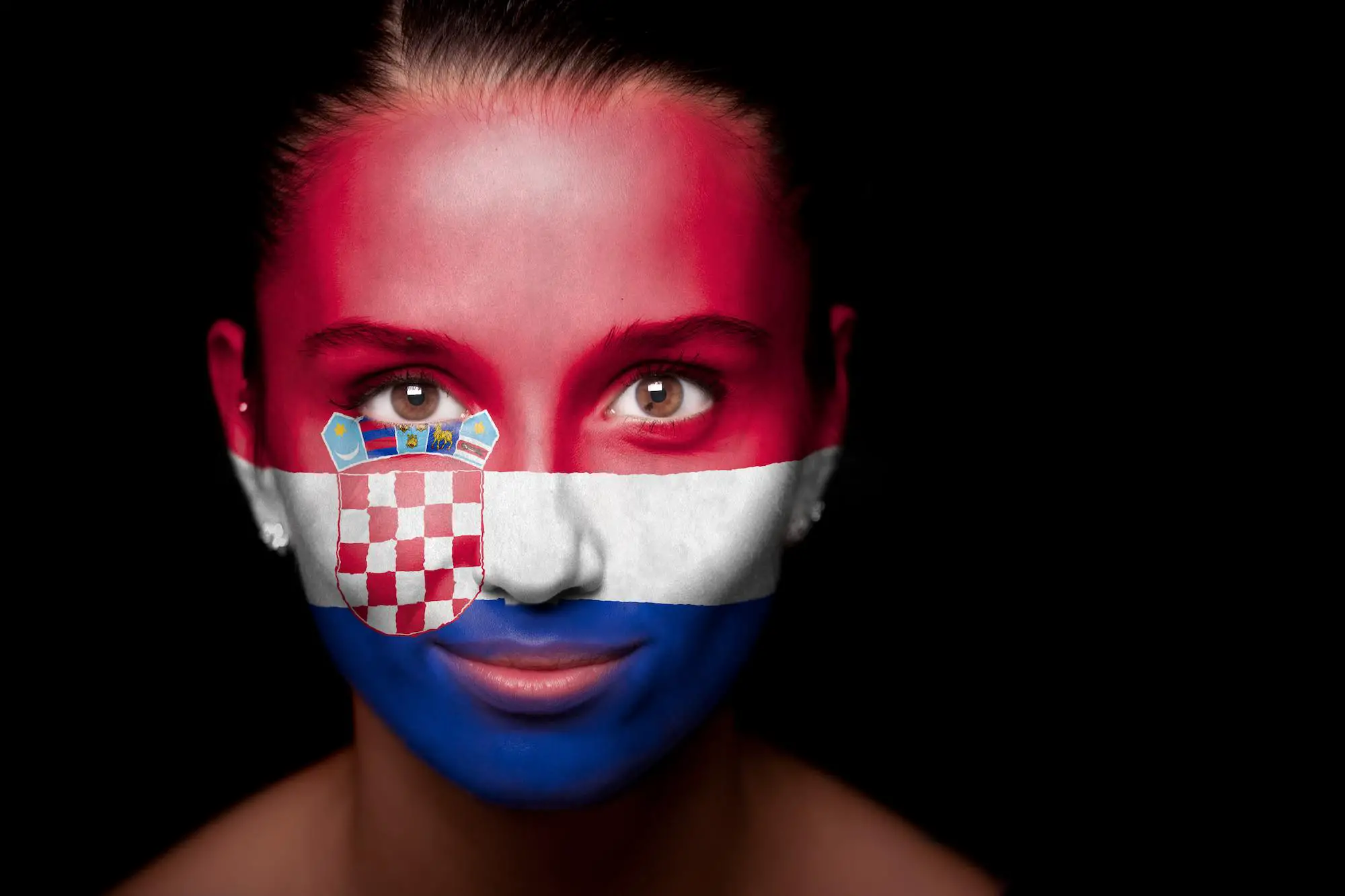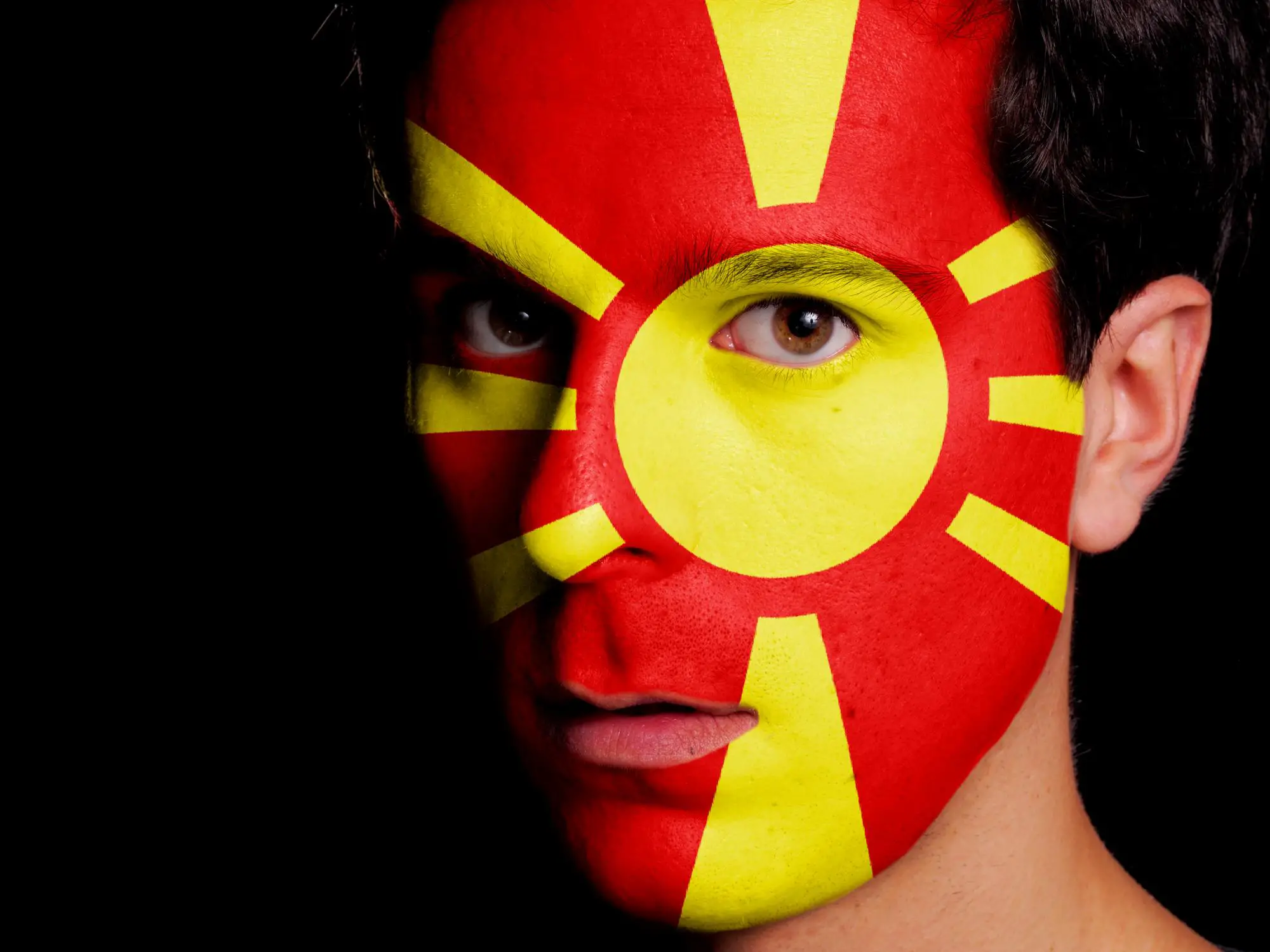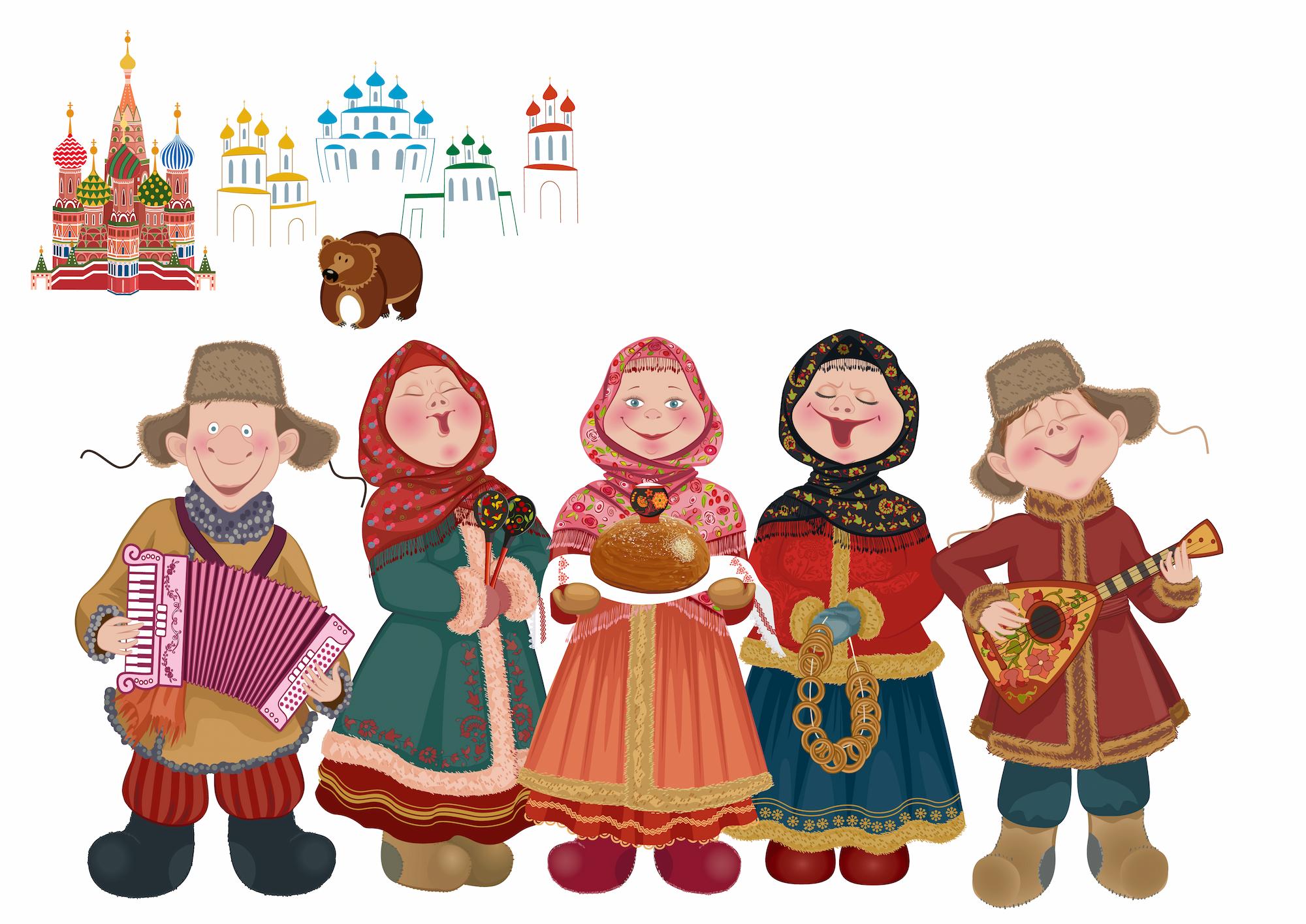Standing at a height of 85 meters and weight of 8,000 tones, “Rodina-Mat’ Zovyot” or “The Motherland Calls” is the tallest statue in Europe and the tallest statue of a woman in the world. The artwork is a depiction of a woman stepping forward with a raised sword. It represents the Motherland Russia who calls her children to defend her from invaders [1].
The statue Motherland Calls was designed by the prominent Soviet sculptor Yevgeny Vuchetich and structural engineer Nikolai Nikitin, and it is located on top of the Mamayev Kurgan hill which overlooks the city of Volgograd (formerly Stalingrad) in Russia.
Table of Contents
The Battle of Stalingrad
This enormous statue is the centerpiece of a much wider memorial complex that commemorates the Battle of Stalingrad – one of the bloodiest engagements in the history of warfare. It was a battle during World War II, between the Red Army and Nazi Germany and lasted for over five months between August 1942 and February 1943.
The Battle of Stalingrad ended with a victory for the Soviet soldiers, and the defeat of the Nazis was in great favor of the Allies during World War II. However, more than two million troops fought during those five months in Stalingrad, and nearly two million people were killed or injured in the fighting.
More than 35,000 Soviet soldiers are buried around the statue. Among them are Vasily Ivanovich Chuikov, Marshal of the Soviet Union, and the famous sniper Vasily Zaytsev who allegedly killed 225 German soldiers.
The location of the hill Mamayev Kurgan was chosen for the construction of the monument as it held the key position in the defense of Stalingrad.
The Construction of the Largest Statue in Russia
The building of the Motherland statue started in May 1959, and when it was finally completed in October 1967, it was declared the tallest one in the world.
From an engineering point of view, the monument is a highly complex and ambitious project. It is constructed of 5,500 tons of prestressed concrete and 2,400 tones of metal structures, mostly wire ropes. Only the sword itself weighs 14 tons. The concrete walls of the sculpture are 25–30 cm thick and inside, it is hollow.

There is no elevator inside the sculpture. There are about 200 steps that lead to the top. They symbolize the 200 days of the Battle of Stalingrad. Around halfway up, there is something like a control room containing equipment that monitors the condition of the statue.
In 1972, the sword of the “Motherland Calls” was replaced with a new one made of stainless steel, without the titanium and with holes near the upper end to reduce the wind impact.
Another fascinating thing is that the statue relies on its own weight and is not rooted in its foundations which started to subside due to rising water levels in 2009. There was a serious concern that it might collapse in case the tilt increased. Luckily, the glorious woman still stands above the city of Volgograd.
A Virtual Tour Inside the Motherland Calls Statue
The memorial complex consists of a few elements and components.
First, there is the entry square with the composition “Memory of Generations” which represents a huge high relief of 11 figures. It depicts a funeral procession to glorify those who died.
Then, follows a walk through the Avenue of Lombardy Poplars that leads to a square with a sculpture “Fight to the bitter!” There is a pool with water, with a monument of a warrior in the middle of it. The pool symbolizes the Volga River from which a warrior is growing to personify the heroic defenders of Russia who fought by the Volga.
Further, there are the Walls that symbolize the ruined but unconquered Stalingrad. The left wall symbolizes the vow of Stalingrad citizens: “Not a single step back!” The right wall elaborates on the attack. This architectural composition is accompanied by sound: battlefield status reports, songs, and bursts of machine-gun fair.
Next is The Heroes Square where another pool of water represents the Volga river and two walls on both sides of it. On one of the walls, there are engraved the words of the writer Vasiliy Grossman, who was a military correspondent from the first till the last day of the battle.
They read: “Iron wind was blowing into their faces and they kept on going ahead, and superstitious fear was spreading among the enemy: who were those people attacking them, were they mortal?”
On the other side, there are six sculptures, each one answering this question.
Then, there is the Hall of Military Glory, This is a cylindrical room with a sculpture of a hand of a killed soldier in the middle of it. The hand symbolizes the passing of the eternal flame to the forthcoming generation. On the round walls, there are twenty-four mosaic flags on which are engraved the names of the killed soldiers.
The last statue of the complex, before the main monument “The Motherland Calls,” is the “Grieving Mother” on the Grief Square symbolizing a mother who cries over the dead body of her killed son. A little pool around the monument symbolizes the mother’s tears.
A little bit further stands the breathtaking “Motherland Calls” with all its glory and beauty.
You can experience the virtual tour of the statue here.
The Motherland Is Calling
Symbolizing love for the motherland, “The motherland calls” statue is not only a beautiful and fascinating sculpture, but it is also beloved by the Russian people as it evokes the feeling of patriotism. The whole memorial site at Mamayev Kurgan is a reminder of the bravery and strength of the Russians. Especially those who have their ancestors buried there.
The monument that overlooks Volgograd and is mesmerizing from any point in the city at any time of day, is very popular for visitors not only from Russia but from around the world. More than one and a half million people visit Mamaev Kurgan annually.







